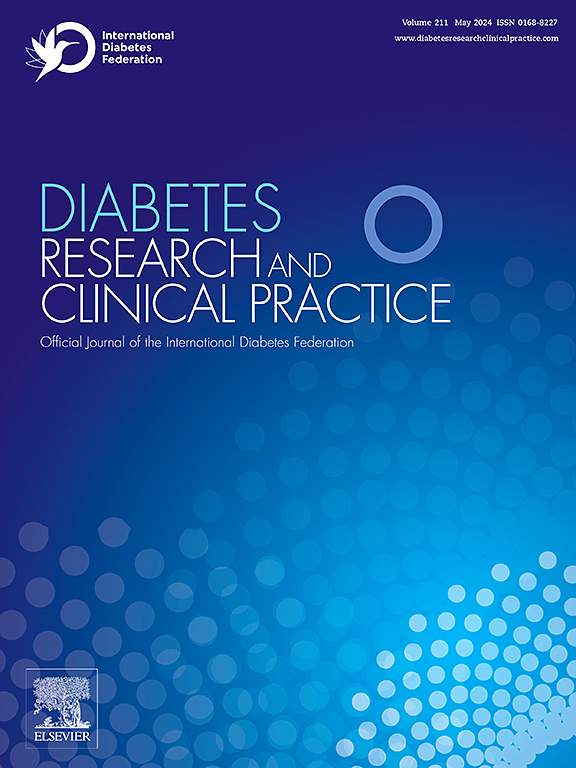Uncovering actionable cardiovascular risk subgroups in type 2 Diabetes: A latent class analysis
IF 6.1
3区 医学
Q1 ENDOCRINOLOGY & METABOLISM
引用次数: 0
Abstract
Aims
The study aimed to identify type 2 diabetes subgroups with varying, actionable cardiovascular disease (CVD) risk factor patterns and explored subgroup differences in characteristics and three-year CVD incidence.
Methods
A Latent Class Analyses was performed to determine classes with similar lifestyle and psychosocial CVD risk patterns, predictive value of demographic, socioeconomic and medical factors, and class differences in CVD outcomes.
Results
The 3-class model was superior. The ‘low risk’ class was largest (71.2 %). The ‘mobility related risk’ class (19.3 %) showed high probability of limitations in mobility (0.90) and not meeting the exercise norm (0.89). The ‘psychosocial risk’ class (9.5 %) had similar risks, with additional probabilities to be lonely (0.49) and have anxiety and depression (0.56). Strong predictors (OR ≥ 2.00) for membership of risk classes were: female gender, non-western immigrant status, lower education, financial difficulties, being unfit for work and/or prior heart failure. Three years CVD incidence was lower in members of the ‘low risk’ class had cardiology care and/or stroke diagnosis compared to the risk classes.
Conclusions
Diverse lifestyle and psychosocial CVD risk factor patterns impact CVD outcomes in individuals with type 2 diabetes, emphasizing the necessity of a whole-person CVD prevention tailored to the person’s needs.
揭示2型糖尿病可操作的心血管风险亚组:一项潜在分类分析。
目的:该研究旨在确定具有不同的、可采取行动的心血管疾病(CVD)风险因素模式的2型糖尿病亚组,并探讨亚组在特征和三年CVD发病率方面的差异:方法: 采用潜类分析法确定具有相似生活方式和社会心理心血管疾病风险模式的类别,人口、社会经济和医疗因素的预测价值,以及心血管疾病结果的类别差异:结果:三等模型更优越。低风险 "类人数最多(71.2%)。与行动有关的风险 "等级(19.3%)显示出行动受限(0.90)和不符合运动标准(0.89)的高概率。心理社会风险 "类(9.5%)的风险相似,但孤独(0.49)和焦虑抑郁(0.56)的概率更高。女性性别、非西方移民身份、教育程度较低、经济困难、不适合工作和/或曾有过心力衰竭经历是成为风险等级成员的有力预测因素(OR ≥ 2.00)。与风险等级相比,"低风险 "等级中接受过心脏病治疗和/或中风诊断的人三年内心血管疾病的发病率较低:不同的生活方式和社会心理心血管疾病风险因素模式会影响2型糖尿病患者的心血管疾病预后,这强调了根据个人需求进行全人心血管疾病预防的必要性。
本文章由计算机程序翻译,如有差异,请以英文原文为准。
求助全文
约1分钟内获得全文
求助全文
来源期刊

Diabetes research and clinical practice
医学-内分泌学与代谢
CiteScore
10.30
自引率
3.90%
发文量
862
审稿时长
32 days
期刊介绍:
Diabetes Research and Clinical Practice is an international journal for health-care providers and clinically oriented researchers that publishes high-quality original research articles and expert reviews in diabetes and related areas. The role of the journal is to provide a venue for dissemination of knowledge and discussion of topics related to diabetes clinical research and patient care. Topics of focus include translational science, genetics, immunology, nutrition, psychosocial research, epidemiology, prevention, socio-economic research, complications, new treatments, technologies and therapy.
 求助内容:
求助内容: 应助结果提醒方式:
应助结果提醒方式:


